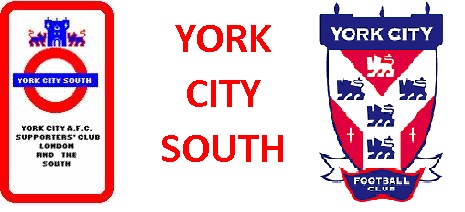

Bootham Crescent - The David Longhurst Stand
The David Longhurst Stand was bourne out of a supporters' campaign and came about following the tragic death of David Longhurst
Christmas 1987 and City were bottom of Division 3. Tailed off. The Annual General Meeting was held in the week between Christmas and New Year. Frank Ormston and I (Chris Forth) attended. Michael Sinclair and Bobby Saxton gave accounts of the situation, they were trying hard and had done their best throughout a difficult year. There was a genuine feeling of sympathy for the club's plight from the meeting. Afterwards, in The Punch Bowl on Lowther Street, Frank and I hatched a plot to do something to help.
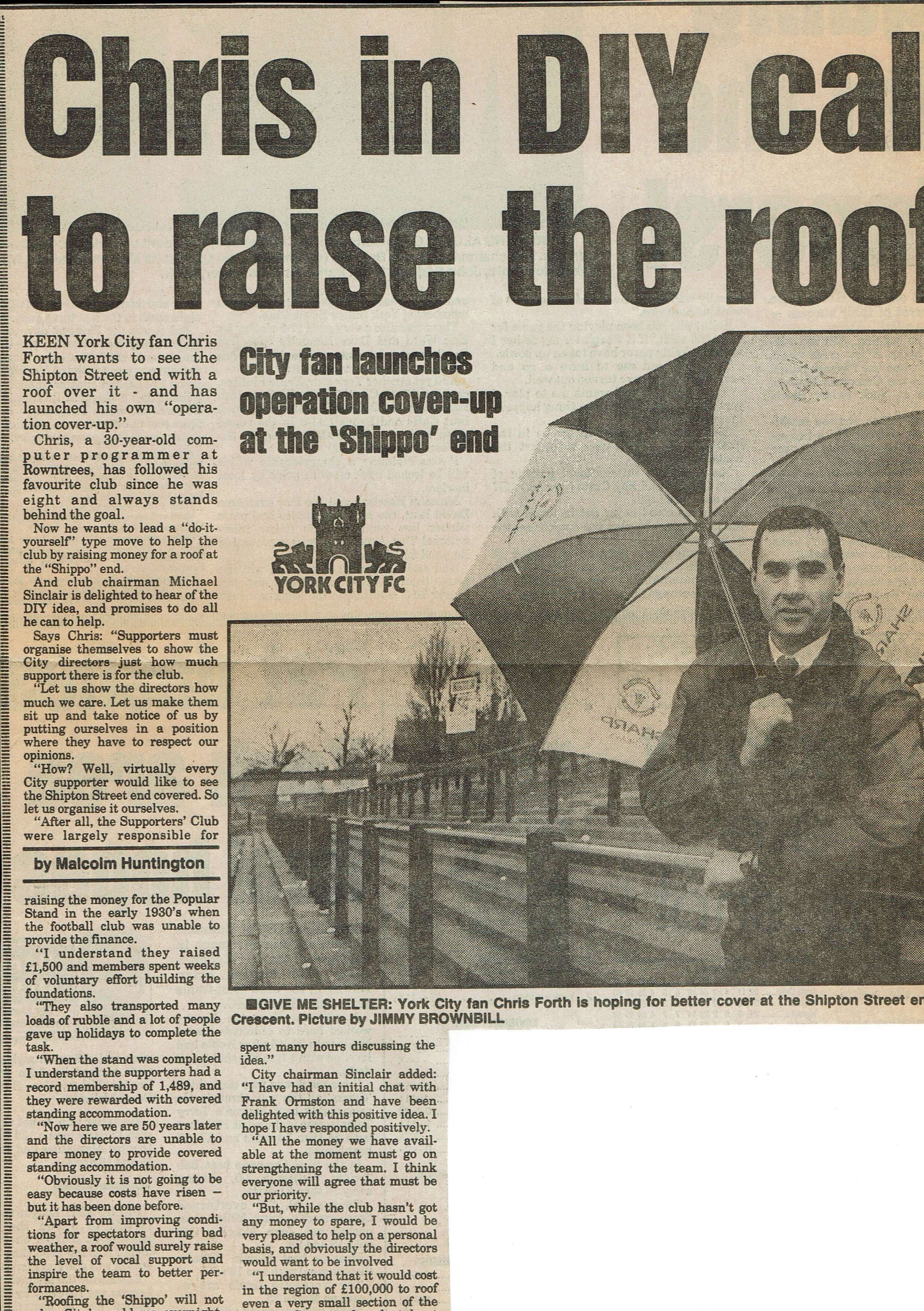
It wasn't a new idea. In the 1930s the supporters had raised funds and built The Popular Stand that survives to this day.
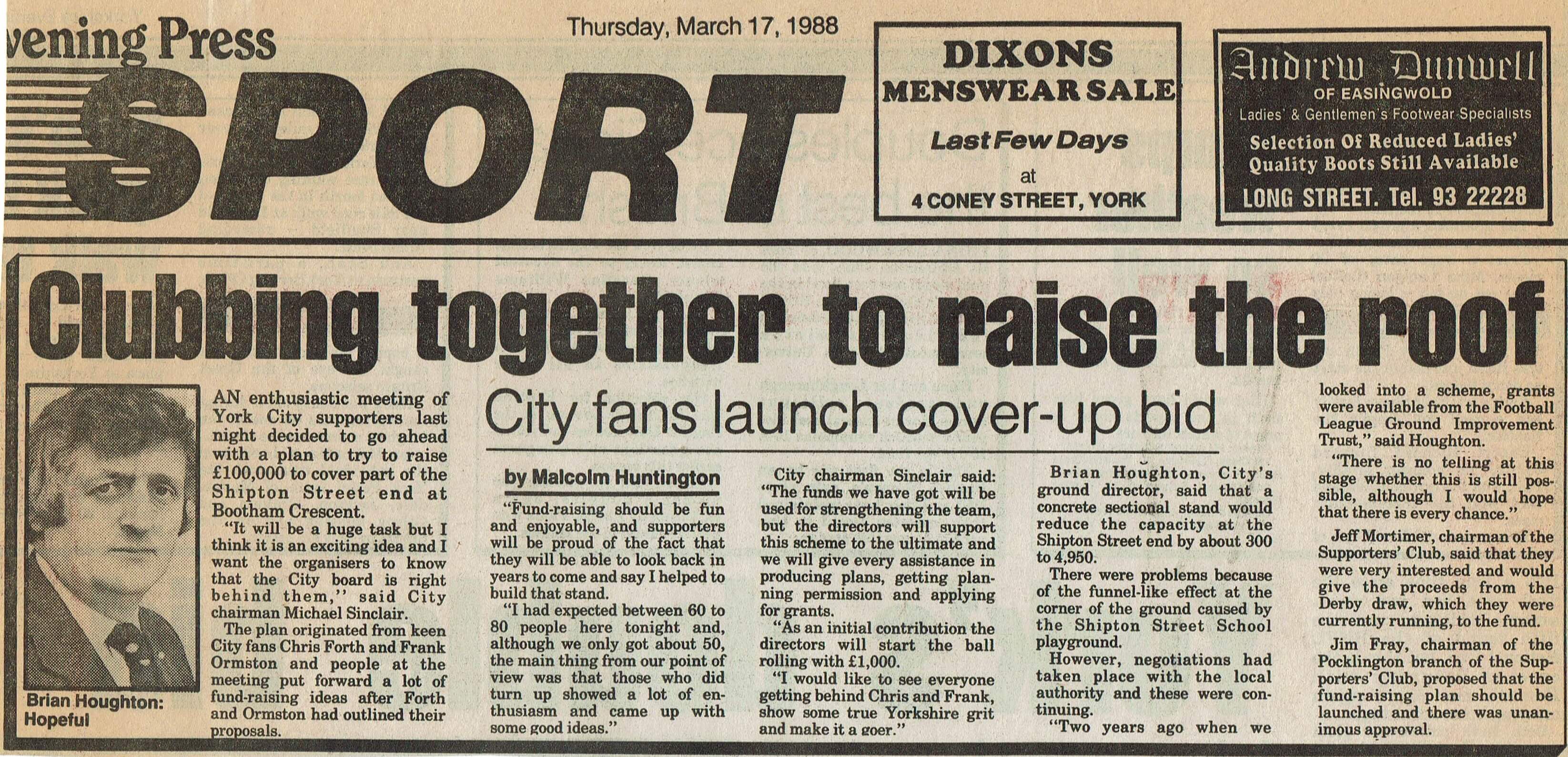
I remember in the 1970s, the subject raised its head again, along with double decker stands and railway halts as City rose into the old Division 2. City's plunge to the basement division soon put an end to the talk.
In 1988, the lack of covered standing accommodation was one of the ground's major drawbacks. Supporters were forced to stand on open terracing. Could we raise enough interest and subsequently enough funds to roof the Shipton Street end of the ground?
An article appeared in Terrace Talk a few weeks later with Princess Diana and a "I'd sell my gran to Roof The Shippo" speech bubble on the front page. Malcolm Huntington, the Yorkshire Evening Press' York City correspondent, read his copy, the club read their copy. One Saturday in February 1988 I got a phone call. "Are you at the match this afternoon?, come and talk to me", it was Malcolm Huntington. The same morning, Frank Ormston received a call from the club, "Who is this Chris Forth?" asked Michael Sinclair. By Tuesday night, the story was all over the Yorkshire Evening Press, together with a picture of me and a borrowed Manchester United umbrella.
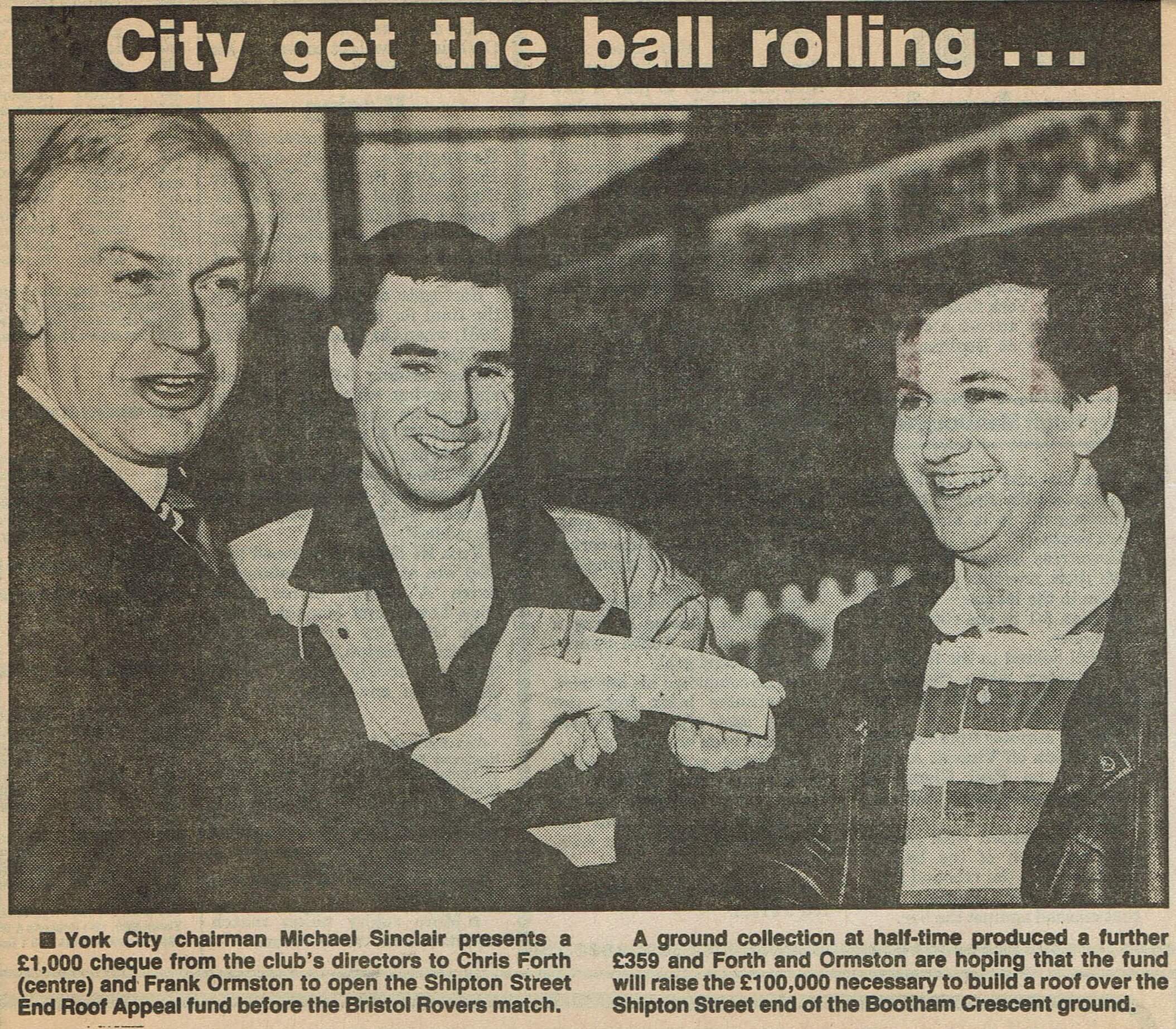
A public meeting was held on 16 March 1988. Over 60 people attended. On the left of the hall, Graham Kilby impressed with his ideas for fundraising. The meeting unanimously agreed that we should launch a campaign to "roof the shippo". A formal meeting on 4 April got us going when a 16 man committee was formed.
The target was £100,000. We would raise the money over at least 2 years. The club insisting if the appeal was unsuccessful, then all monies raised would be put towards other expenditure which would benefit the supporters. The club could not afford to donate club money to the appeal but would pay the costs associated with producing plans and gaining planning application. The directors gave us a personal donation of £1,000 out of their own pockets to launch the appeal. I remember when Sinclair made the pledge I asked, "Is that each director?", unfortunately it wasn't. The club provided their support and, if the appeal was successful, committed to maintaining the new stand for standing supporters unless statutory powers forced its conversion to seats.
From the outset we knew a 50% Football Grounds Improvement Trust grant might be available and that if we found a sponsor for the roof we might need only collect as little as £20,000. Events were organised that kept the money coming in. However, in the pre Fever Pitch days, with the Thatcher government and national media being very anti football, big business didn't commit any money.
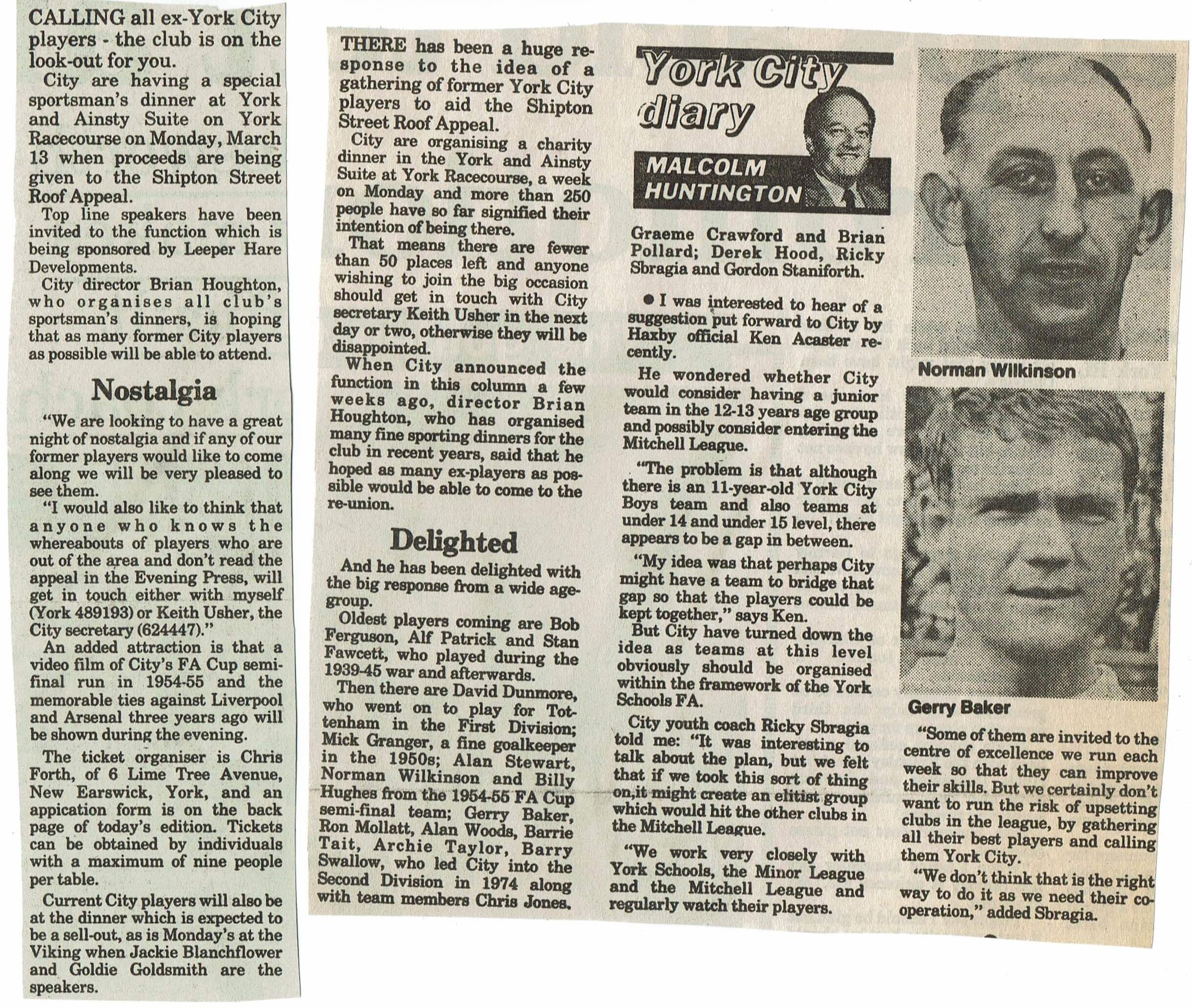
Throughout the length of the appeal the club gave their full support. In particular, secretary Keith Usher and director Brian Houghton, with responsibilities for ground development was very supportive as was Barry Swallow. Keith Usher was always willing to devote his own time to helping the campaign. Brian did sterling work in organising a series of Sportsman's Dinners. The first being one of the highlights of the appeal. It was the occasion that many former City stars were once again gathered together. The turnout included many of the 1955 FA Cup side and from more recent times, members of City's 1974 promotion winning side. Dennis Wann came across from Blackpool especially for the evening. Norman Wilkinson travelled down from County Durham. Wilf McGuinness was guest speaker. It raised over £1,700.
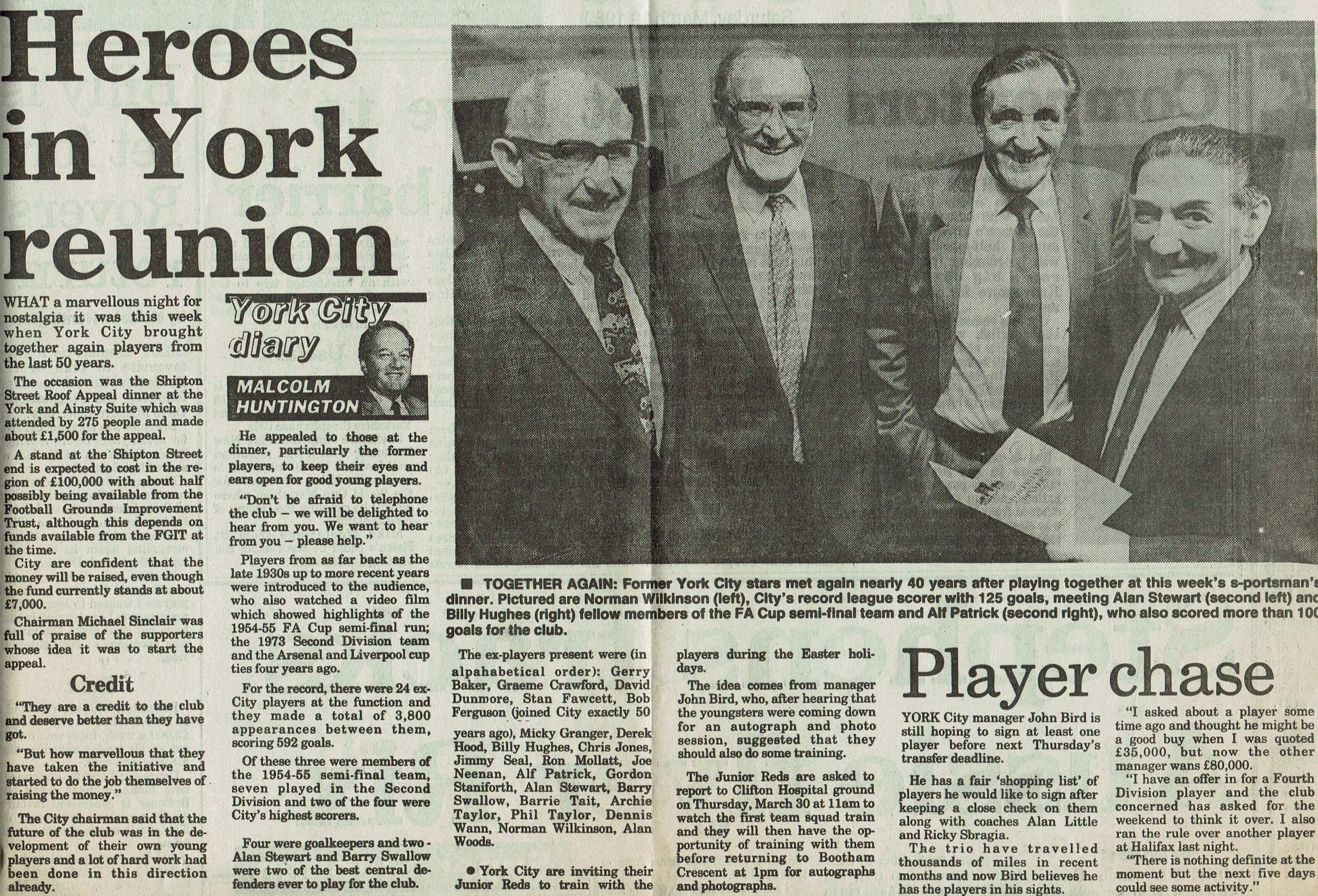
Over £1,500 was raised one summer Sunday morning when about 70 people, with Chairman, Michael Sinclair leading the walkers from the front, together with the entire playing squad, did a 4 mile sponsored walk around the City Walls. Others did sponsored walks and hitches to matches or sponsored TV quiz show appearances.
In August 1989, Middlesbrough played City at York in a friendly match with all the proceeds going to the fund. 1,183 saw a 2-2 and £3,500 was raised for the fund. The appeal produced our own official match day programme for the game, as it did for other pre season friendlies during the appeal.
One particular highlight for me was the publication of Dave Batters book "York City. A Complete Playing History", a magnificent book, which I find difficult to put down whenever I pick it up. Dave donated profits from his book to the appeal.
I am sure all the youngsters who turned up to coaching day organised by John Bird in May 1991 would say that was their highlight. It certainly surpassed our expectations. Many supporters will say their highlight was the opportunity to look behind the scenes at Bootham Crescent.
Other fund raising events included a car boot sale in the club's car park (11 "booters" each paid a fiver, so £55 profit) and at the ground, one turnstile allowed fans to pay £4 (1989/90), the extra 50p admission fee which was donated to the appeal. In 1989, City keeper Scott Endersby and his wife hosted a fund raising event at his Black Bull pub. Meanwhile, there was a regular matchday social club raffle and Supporters Club events and donations.
For me, I had the luxury of an executive box, the only one ever at the ground with a view of the pitch, or so people joked. It was perched behind the Shipton Street goal at the back of the terrace. Keith Usher had arranged it, a garden shed, free of charge from Garden Care of Huntington, it served as a rallying point. Stocked with various football memorabilia, regularly replenished by fans donating articles for sale, it provided a steady matchday income. On the fateful day when David Longhurst died, and despite us not having scored a goal in our first 4 games of the season, at least 3 people passed by during the first half, all commenting how well Longy was playing and it wouldn't be long before we were up and running.
The appeal suffered a blow in early 1990 when the council rejected an initial planning application. A few months later, the 2-year fundraising period ran out with insufficient funds collected. As we were close to the target it was decided to extend the appeal by a further year.
On September 8, 1990, David Longhurst died while playing for York City against Lincoln. The match was abandoned. Immediately after the game, several supporters suggested that it would be a marvellous tribute to David if the new stand could be named in his memory. Within the club there was a similar feeling.
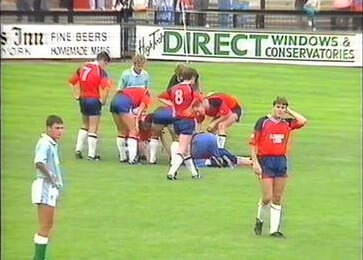
The parents of David, a single man, readily agreed that to name the new stand "The David Longhurst Stand" would be a fitting tribute to a popular and very skilful player.
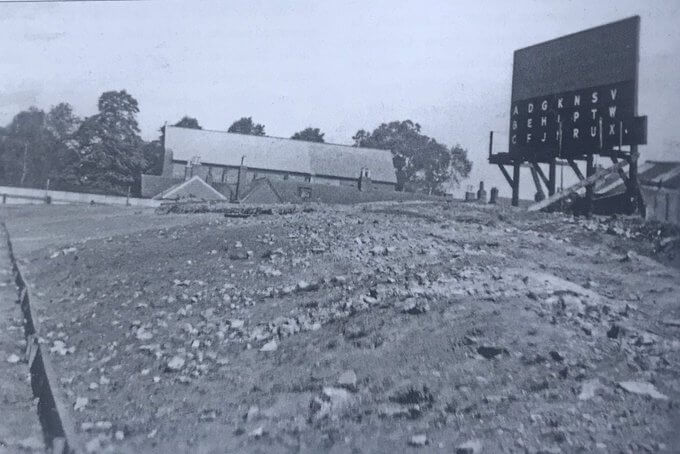
Fundraising continued. Many generous donations were received from around the country. Many supporters of David's former clubs organised events. In Scunthorpe, one girl organised a disco that raised over £1,000. Her employer doubled it. Other supporters did their own thing (for example one supporter organised a sponsored walk to Torquay for a game). Visiting supporters often gave generously, many visiting Bootham Crescent donated their £1 change from their admittance money. Fanzines, including Rangers "Follow Follow" and Bradford's "City Gent" donated copies that were sold to help the appeal.
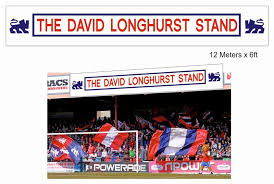
With sufficient funds in place, planning permission was granted in April 1991 and building started the following month. The stand was first used at the start of the 1991/2 season against Gillingham.
The Football Grounds Improvement Trust gave £65,000 towards the stand. As much again was raised by The David Longhurst Appeal and our original Roof Appeal.
To everyone who helped raise the money a big thank you is due. All those who donated, those who helped in organising events and collecting money and even those few people who doubted we would ever reach our target. You all provided the encouragement we needed to reach the target.
The last event of the fund raising campaign was a friendly match against Leeds to mark the official opening of the stand. Vic Longhurst, David's father performed the official opening ceremony. He and about 50 relatives who had travelled from Corby for the game witnessed the sides draw an entertaining game 2-2.
4,000 standing spectators can be accommodated in the stand. It is very noticeable how much more noise and atmosphere can be generated by a small number of people standing beneath the roof. Although the average attendance hovered around 2,000 at the time, the manager and several players commented on the improved atmosphere at matches. Indeed, at one particularly exciting early season game I heard comments that people were going home with ringing in their ears and complaining of temporary deafness.
The stand provides a permanent and impressive memorial to a very popular player.
Keith Usher's highlight? The day he took an unexpected phone call from Bobby Robson, Keith's boyhood hero, thinking it was a hoax, Keith let go with a long string of expletives. Bobby Robson calmly let Keith have his say before apologising to Keith that he couldn't bring his England team to Bootham Crescent for a friendly match and then having a long chat with Keith.